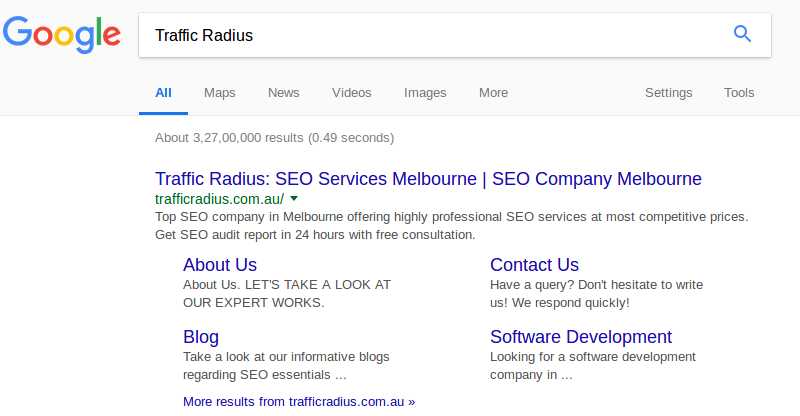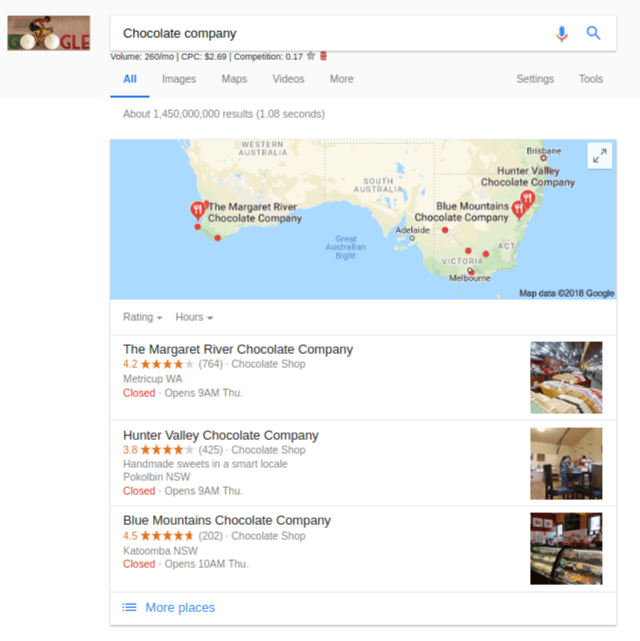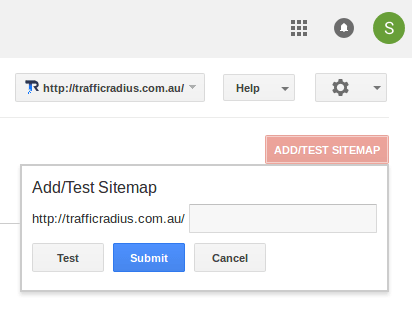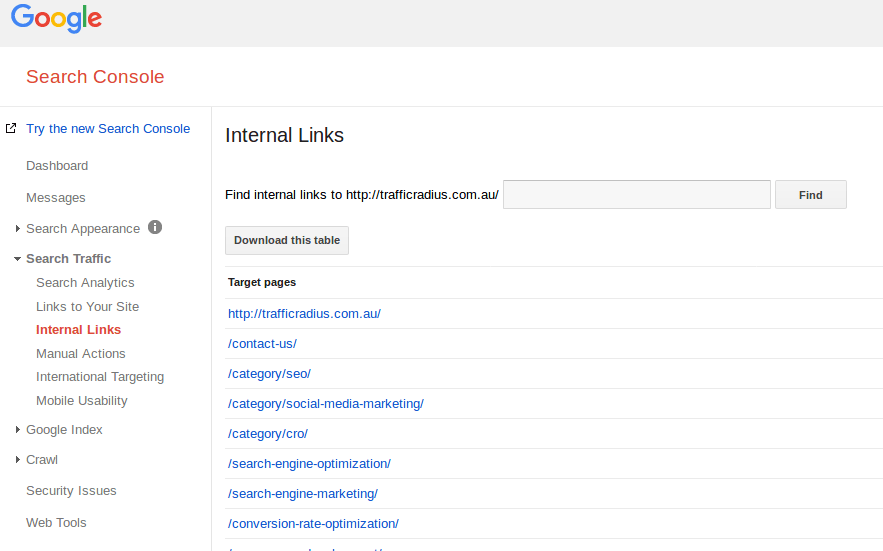I hope you enjoy reading this blog post.
If you want to get more traffic, Contact Us

Click Here - Free 30-Minute Strategy Session
Be quick! FREE spots are almost gone for this Month. Free Quote

Want to get Google Sitelinks for your website? Wondering how to get Sitelinks or what are Sitelinks? If your answer is yes, then you are at the right place. Today, it is easier than ever before to get better Google Sitelinks.
Google traffic is undoubtedly the number 1 traffic source that any website can get. Wondering why? Well, it assures huge traffic just by following the right SEO tactics. Best part – all that traffic is for free.

Click Here – Free 30-Minute Strategy Session
Be quick! FREE spots are almost gone for this Month
As a marketer, it is important for you to know the significance of good search engine rankings. While increasing traffic through search engine is quite hard, there is one quick way though – getting the Google Sitelinks.
Ranking higher will help you to continuously receive targeted organic traffic for several months and even years without the need for efforts on a regular basis.
While good rankings are extremely important, it is also necessary to get more people to click on your website in the search engine results. This is known as “Click Through Rate (CTR)”.
A great way to boost your CTR would be to secure Google Sitelinks. So, what are Sitelinks or Google Sitelinks? How can Google search Sitelinks help your website? Next, most important, how can you get Google search Sitelinks or Google Sitelink extensions?
In this guide, we will provide you with everything that you wanted to know about Google search link to site, Sitelink extensions best practices as well as sitelink extensions example. Let us now get started without any delay.
Google Sitelinks are nothing but small sub-listings, which appear below the first link in the search results. Particularly, when the users search for specific brands. You would have come across this on numerous occasions.

These are multiple links that appear the main website and are also referred to as Google search Sitelinks or Google Sitelinks extensions. The main purpose of Google Sitelinks is to assist search users to conveniently navigate across your website.
A search user looking out for a specific website might not want to land on the home page. Rather, the users might want to visit the “About Us” section or directly land on the “Blog” page.
Google Sitelinks cut down one step in the process of navigation by carefully placing vital links well within the search results. Simply put, Sitelinks Google, AdWords Sitelinks, etc. direct search users towards the best possible results within a very short time frame.
Besides, following Google Sitelinks best practices and Sitelink extension best practices will make your website appear highly prominent in the search results. This can be great to boost your branding.
Google Sitelinks are around since a decade now. While they first appeared around 2005, they became a regular feature in the search results by the year 2007.
Since then, there have been numerous iterations of Sitelinks as well as other Sitelink extension example, to arrive at what you are seeing today. Furthermore, Google has cut down the maximum number of Sitelinks from “12” to “6”.
The main aspect here is, the type, design and number of the Sitelinks will change regularly from time to time. The optimization techniques to secure some Google Sitelinks will largely be the same.
When users search for poorly optimized websites or slightly obscure websites, the chances are that Google will not display any Sitelinks for it. However, in case of some websites, it might just go way beyond the normal pack of 2,4 or 6 Sitelinks.
According to Google, they only show Sitelinks to those results that they consider to be useful to the search users. However, if the website structure does not support Google algorithms to find the ideal Sitelinks or if the Sitelinks from a particular website are not relevant to the search query, then Google will not show them.
So, we can conclude that, in the following two circumstances Google Sitelinks will not be displayed:
a) The Sitelinks are not at all relevant to the query of the search users
b) The website structure does not support Google algorithms to identify suitable Sitelinks
The good news is, although you cannot keep guessing what the search users might look for, you can still carefully design your website in a way that boosts the chances of discovering valuable and good Sitelinks.
This is exactly what we are going to focus in this blog today. Before, jumping into it, let us first find out what makes Google Sitelinks so important.
Google Sitelinks help search users to save their valuable time by providing them with highly relevant results. However, how can businesses, website owners and marketers benefit from it?
Following are some of the major benefits of Google Sitelinks and Google Sitelink extensions that you cannot ignore.
Apart from the search rankings, CTR is another most important factor that helps you to successfully generate organic traffic. On an average, the top three search results are the ones that get 55% of the clicks.
However, this percentage fluctuates over time. Let us say that a particular keyword gets as much as 10,000 searches per month. According to the statistics, the top result secures 3.124 clicks.
Now, if you consider that even the top result gets Sitelinks, now as the Google Sitelinks dominate in the first half of the search results page, it ends up getting 20% more clicks.
This will transforms into an extra 2,000 clicks per month. Now, isn’t that exciting? Well, certainly it is. In fact, a case study carried out by PPC-Hero stated that Google Sitelinks boosted CTR by a whopping 64%.
Note that, Google Sitelinks also pop up in case of paid search results. A study identified the fact that the visibility of Google Sitelinks and CTR are directly proportional. When a marketer stopped showing Google Sitelinks, CTR also plunged from 20% to a mere 10%.
Furthermore, the actual number of the leads was also found to be reduced accordingly. So, the key take away here is that, if you want to get more number of users to click on your ads or website, then just get Google Sitelinks.
Google Sitelinks are one of the critical metrics that determine the reliability of a website. When you come across Sitelinks on a site, it means that the website is trusted enough by the Google to give it some Sitelinks.
However, if you look out for some unpopular, obscure websites having poor trust rating, the chances are that you will not come across any Sitelinks. Now, when you look at websites with exactly opposite aspects, you will be able to see Google Sitelinks.
It is important for marketers like you to understand that Google is totally aware of the fact that Sitelinks consume almost all of the “Above the Fold” area, pushing the other search results further below the fold.
As Google is hell bent on giving the best possible experience to all its users, they just do not promote any link that is not trustworthy in the “Above the Fold” area.
However, the Google algorithms are also not perfect. So, the chances are that they might make mistakes. But, they keep getting better with every passing day.
Google Sitelinks generally link back to the most significant pages of your website – certainly from the Google perspective. For this, the actual number of the external and internal links will be taken into consideration.
Most often, these will generally be your “product”, “service” or “About Us” pages. This makes Google Sitelinks one of the best ways to educate users about your services and products, thereby improving the awareness of your brand.
For instance, let us say that you are searching for “FourHourWorkWeek” by Tim Ferriss. What will you be able to see? Well, you will see the podcast as well as his book that fetched him all the fame.
Similarly, if you end up searching “Neil Patel”, then the Google Sitelinks will present you with the “About Us” page of his website. The page has a short video on Neil Patel, which is an excellent way to introduce him.
When search users land on your website, the chances are that they will browse through your product and services pages as well as your Homepage. Totally, these users might end up visiting 4 to 5 web pages before they make up their mind to leave.
Let us take this opportunity to ask you the following:
Will they make an attempt to visit any of your popular blog posts? Will they navigate to identify your resources page, which provides marketers like you with the best possible conversion?
Well, the answer is, mostly “NO”.
Surprised? This is because Google Sitelinks will show up these popular links in the search results. This drives traffic to all the most significant pages of your website.
For instance, let us consider the website of Noah Kagan – OkDork. This website has Sitelinks showcasing all his highly popular blog posts. It also shows his “About Us” page, a link to the complementary marketing tool kit as well as a welcome guide for the beginners.
This will proactively help to drive traffic to the desired web pages, which are bound to deliver the results – rather than just blindly redirecting the users to the “home” page of the website.
Finally, we have arrived at the most important part of the blog – how to get Google Sitelinks for your website. Well, the answer is, there is certainly no one single or direct method to get Google Sitelinks.
You can first log in to the Google Search Console and get the Sitelinks. Right now, things stand as follows:
• Google just does not say how to develop Sitelinks or directly manage their appearance
• Google Sitelinks are automated
• These are created by constantly following website best practices
Unfortunately, there is no one specific technique which can be followed to get Google Sitelinks. However, by following the process below, you will certainly enhance your chances to secure Google Sitelinks.
Let us now examine this process step by step.
The first and the foremost step to get Google Sitelinks is to ensure that your website has a unique brand name. For instance, let us say that your website is known as “The Chocolate Company”
In such case, your website will never reach the top of the first page of the search engine results. Why? This particular term is way too generic. There are several thousand companies that make chocolates throughout the world, making it difficult for Google to identify yours.

Therefore, a great way would be to have a brand name that is unique. This makes it easier for your website to rank higher and secure Google Sitelinks. For example, Google is clear that when users type “QuickSprout”, they are looking out for Neil Patel.
However, in some of the rare cases, brand names will be qualified for the results that appear on the first page – Apple – a wonderful example of this. Based on the user intent, Google will be able to understand that the users are looking out for the brand “Apple” rather than the fruit.
Well, this holds good for bigger brands like Apple. Smaller brands cannot enjoy this luxury of keeping generic names. Wait a minute, we are definitely not asking you to transform your brand name right away.
We know that it involves a lot of efforts, but as your business and the brand grow, your chances of securing Google Sitelinks also increase. However, if you are still at the point of getting your domain name registered or still choosing your business name, then forget keyword matching domains and go with something unique.
Websites having a clear structure and hierarchy make it easy for the Google to navigate and crawl across it. Just think, if Google finds it difficult to locate all the web pages on your website, it fails to understand their positions with respect to each other.
Hence, it will not show any Sitelinks. So, just maintain your “Homepage” as your “root” web page, because it is the page that is most visited and is also the navigation’s starting point for all those who visit your website.
This is the page that assists the visitors to successfully find and navigate towards other web pages across your website. Simply put, the structure of your website should be organized, logical and intuitive.
For instance, let us say that you sell cycles, in that case you can organize your website navigation as follows:
“Home Page>>Girls Cycle>>Ages 10-12>>Hiking Bikes”
On the other hand if you sell cooking guides, then you can try doing something like this:
“Home Page>>e-Books>>Cooking e-Books>>Beginners’ Guide to Soups”
However, along with following such a structure, it is also necessary for you to maintain all the other “Standard” web pages that a website should have. These include Product Page, About Us, Privacy Policy, Contact Us, etc.
Any guesses on who could be the most deserving candidate for Google Sitelinks? Well, it is certainly the very first search result. No second search result has ever got Sitelinks and neither will it ever get.
So, just get to the top and rank #1 for the name of your brand.
Let us say that you are searching for the term “New Yorker”. When you do this – the magazine, NewYorker.com website is the one that gets the Google Sitelinks and definitely not NewYorker.de. This is only due to the superior ranking of NewYorker.com.
Yes, that is the power of ranking at the position #1. So, as soon as you reach position #1, you can quickly and easily get the Google Sitelinks.
Having a sitemap in place will tremendously help Google to easily crawl across your website. Adding sitemaps will not only enhance the overall coverage for your web pages, but also it also defines significant web pages.
Google generally responds based on the traffic that your web pages receive as well as the priority. So, if you have not yet included your website to the Google Search Console account or if you still do not have your account, then you can create one.
Once you set up your account, you can do the following to add your sitemap:
a) Log into your Google Search Console Account, then click on the website
b) Next, on Dashboard, hit the link “Sitemaps”
c) On the following screen, on the right-hand side, choose the option “Add/Test Sitemap”
d) Fill your Sitemap location (which could be either sitemap.xml or sitemap.com) in the pop-up box

However, if you are not yet having a sitemap, then you can:
1.Create one for WordPress websites (Google Sitelinks WordPress) using Google XML Sitemaps Plugin
2.Create one for your HTML websites using XML-Sitemaps.com
However, if you are using WordPress plugins like Yoast SEO or All in One SEO, then both these plugins have built-in Sitemap functionality.
While the discussion on how helpful are internal links for SEO is still going on, it does help Google to identify the most important pages on your website.
For example, when you continuously link to a particular product page, this serves as a signal for the Google to consider it as a critical page.
Let us consider the following example:
If you end up landing on the blog – FourHourWorkWeek – by Tim Ferris, the first half of your screen will be flooded with the information on Tim’s podcast. When you search Google for FourHourWorkWeek, the podcast will also get displayed along with the Sitelinks.
So, what does this mean? Well, this simply means that Google recognizes the podcast and considers it to be significant for FourHourWorkWeek. This is because it has maximum number of internal links pointing back and also is frequented by several search users.
This upholds the fact that adding some of the internal links to your web pages, particularly the ones that you want to get displayed in the Google Sitelinks. This can be a great idea.
Google webmaster tools will help you to efficiently track your internal links.

Being one of the most significant on page SEO factors, page title has a major role to play in securing Google Sitelinks. Here, the trick is to have the correct page title.
Google takes a look at the page titles and evaluates it before it provides the Sitelinks. So, you can ensure that the titles of your web pages are short, crisp and provide a short description of what your web pages are all about.
Furthermore, the page titles should be logical and should be up to the expectations of the visitors. What does this mean? Simple, stop naming your “About Us” page with something like “How About Knowing us Better?”.
This makes it confusing and illogical, thereby confusing Google making you get duplicate or absent Sitelinks. For instance, consider the website Social Triggers – by Derek Halpern.
It has a page on Social Triggers – which is a blog – as well as the About Us page. The following are the respective page titles:
• This is what Social Triggers offers – Social Triggers
• About Us – Social Triggers
This means that the website owner is wasting a Google Sitelink by pointing back to another page that is similar.
Well, we understand that increasing the awareness of your brand is certainly a never ending process. But, how much awareness is sufficient to secure some Sitelinks?
The best way to begin with would be to ensure that sufficient users are aware of your website. The key lies in making your website a reliable and reputable one. Doing this will increase your chances of getting Google Sitelinks.
Spread your brand name, making increase its reputation. When the popularity of your brand increases, people tend to search for your brand.

LEAVE A REPLY